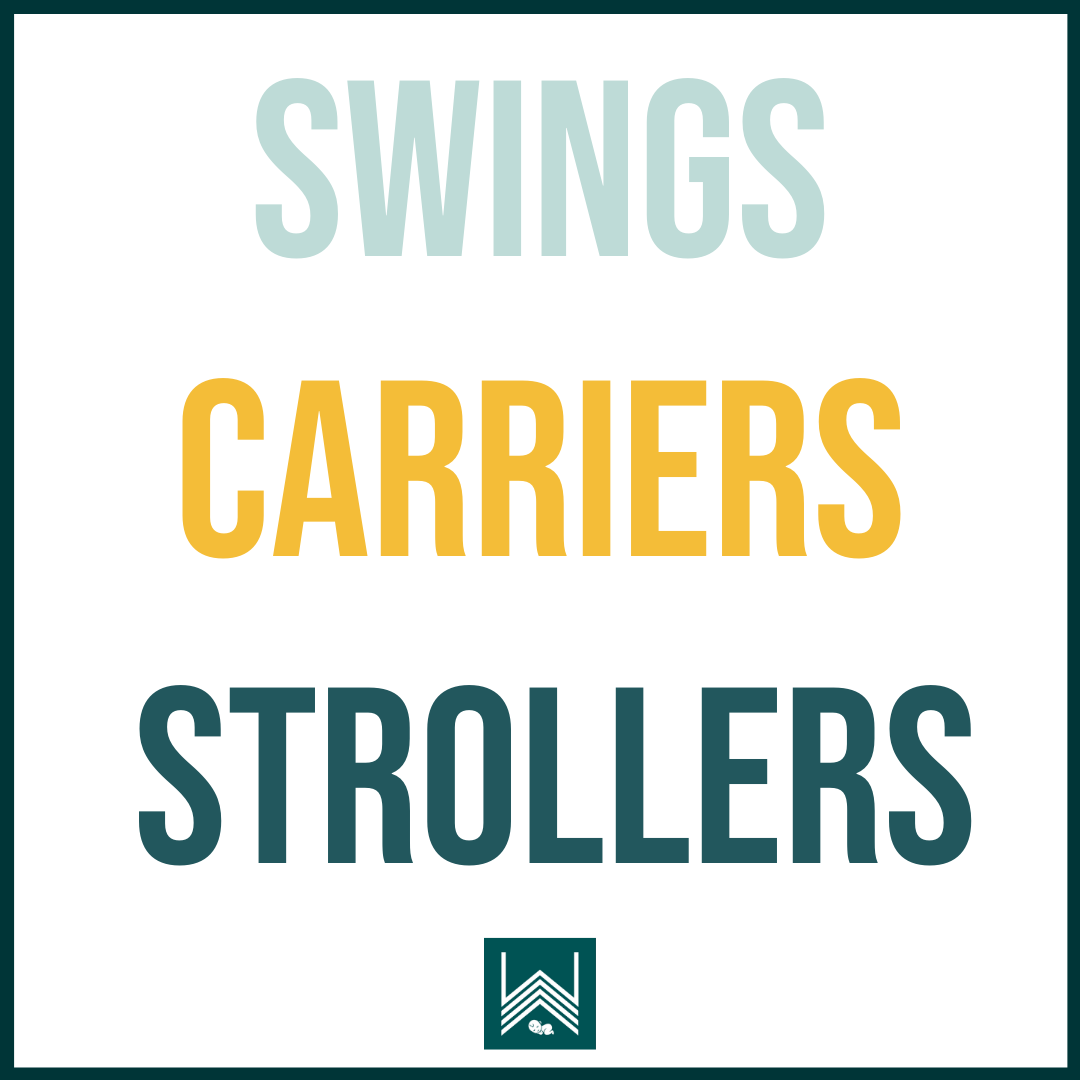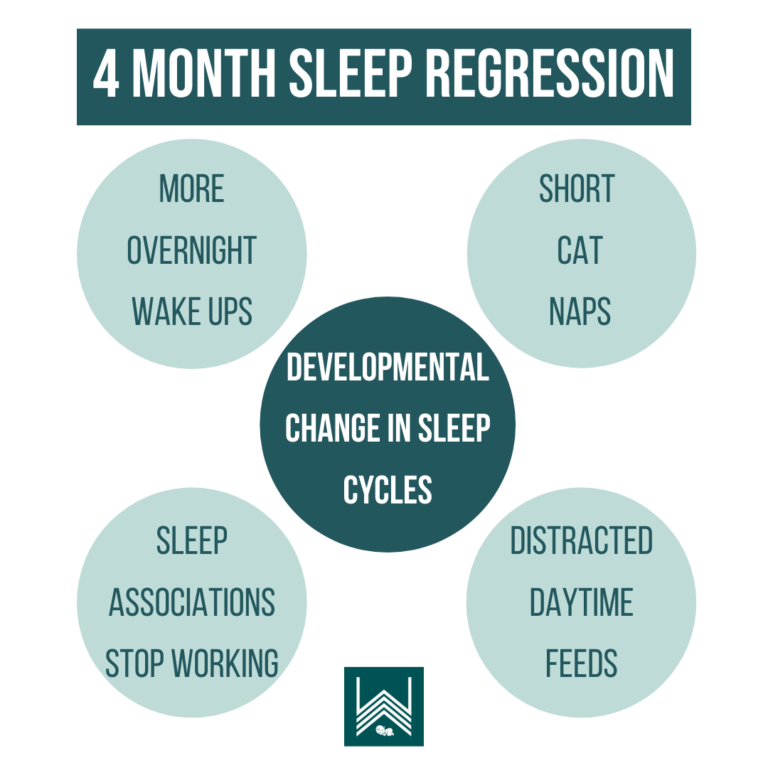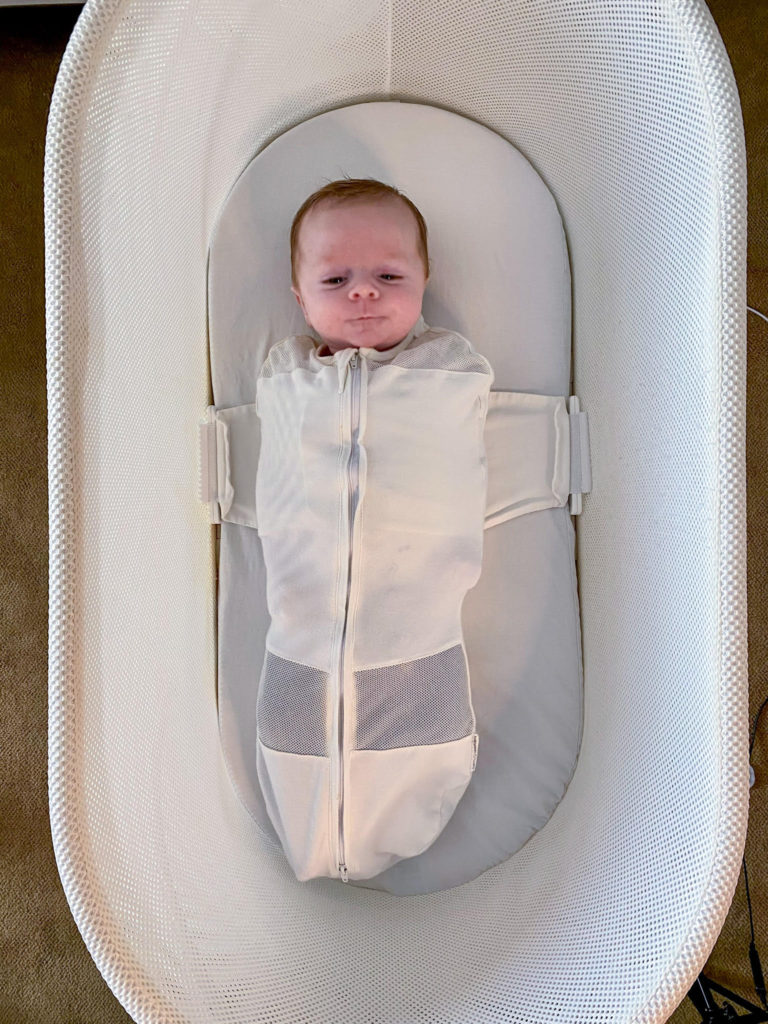How to Get Baby to Sleep in the Crib
Does your Wee One prefer to snooze in your arms, a swing, carrier, or stroller rather than the crib or bassinet?
One of the most common questions I get from new mamas is
“How do I get my baby to sleep in the crib??!!”
First off, let’s get real and not shame any mama who has gone through this or is currently living this! Teaching your baby to sleep in the crib is no easy task! It can take 2-4 weeks of consistent practice before your baby may readily accept a nap in the crib. And carriers can be a lifesaver in the newborn period and beyond or when there is an older sibling to entertain during the day!
In the newborn period, naps in your arms, a swing, a stroller, or carrier are to be expected. Newborns don’t have the ability to self soothe and need help from you to sleep! Plus, snuggling a sleeping newborn is just about the best thing EVER! Holding your newborn for sleep can help:
- Regulate body temperature
- Regulate breathing
- Reduce stress
- Calm a fussy baby
- Reduce crying
- Increase oxytocin and bonding–LOVE hormone
But at some point, you may find yourself looking for some “me” time, focused attention on a sibling, or even take a nap yourself while baby naps!
Studies show that babies’ sleep improves once they learn to sleep in their own space with fewer disturbances and wake-ups. I recommend working on naps in the crib as early as 2 months to set up a healthy sleep foundation and promote safe sleep practices. Once your baby is 6 months or older, it is harder to change sleep habits!
What to do if my baby will only sleep in my arms or a carrier?
Even from a very young age, infants are able to recognize differences in their environment which is part of the reason why laying your baby down can be challenging without them waking back up!
If your baby is used to sleeping against your warm and snuggly body and is less than 3-4 months, swaddling your baby can help mimic the same warm and snuggly feeling once placed in the crib.
If your baby is under 4 months, try waiting to put them down in the crib a few minutes after their eyes stop twitching and they have transitioned into a deeper sleep state.
You can keep your hand on their chest and ever so gently wiggle them and give light pressure until you are confident they are asleep in the crib.
If your baby is older than 4 months, try using a sleep sack and putting your baby in the crib slightly drowsy with shushing and patting to sleep and checking in on them over intervals of time to calm and reassure them.
Don’t give up after one day! This is a huge change! If your baby is used to being held for both overnight sleep and naps, then start with overnight sleep in the crib before moving to naps!
What to do if my baby only sleeps in a swing or stroller?
Motion is SO soothing and lulls many babies into a sweet slumber, but if this is the only way to get your baby to fall and stay asleep follow these tips to help transition out:
If your baby is used to sleeping in a swing, start by gradually reducing the level of motion each day until they are sleeping in the swing without motion. After a few days of sleeping in the stationary swing, then try moving baby to the crib. Start with the first nap of the day before baby becomes overtired.
If your baby is used to sleeping in a stroller, start by putting them in the stroller, but not going for a walk. Once your baby has had a few days of stationary stroller naps, you can transition to the crib.
With either of these scenarios, I would recommend working on sleep in the crib overnight first before moving to naps and recognize that naps take ALOT of patience to see improvement!!
Other Tips for Successful Crib Naps
- Keep the room dark and cool
- Use white noise
- Watch baby’s sleep cues and put baby down for a nap before becoming overtired
- Start a nap time routine to signal to your baby “it’s time for sleep!”
- In the newborn period when putting baby in the crib already asleep with hopes of keeping them asleep try laying your baby in the crib with the feet and bottom touching the crib before the head to avoid triggering the startle reflex
- Practice, Practice, Practice–a 10 minute nap in the crib is success in the beginning
- It can take 2-4 weeks to see consistent improvement
If naps in the crib are still a challenge and you need more personalized help, set up a consultation to see how I can help your Wee One with sleep!
Did you Enjoy this post? Subscribe to receive updates and special promotions!
I promise I won’t spam you!
Please Share this Post with a Mama!







